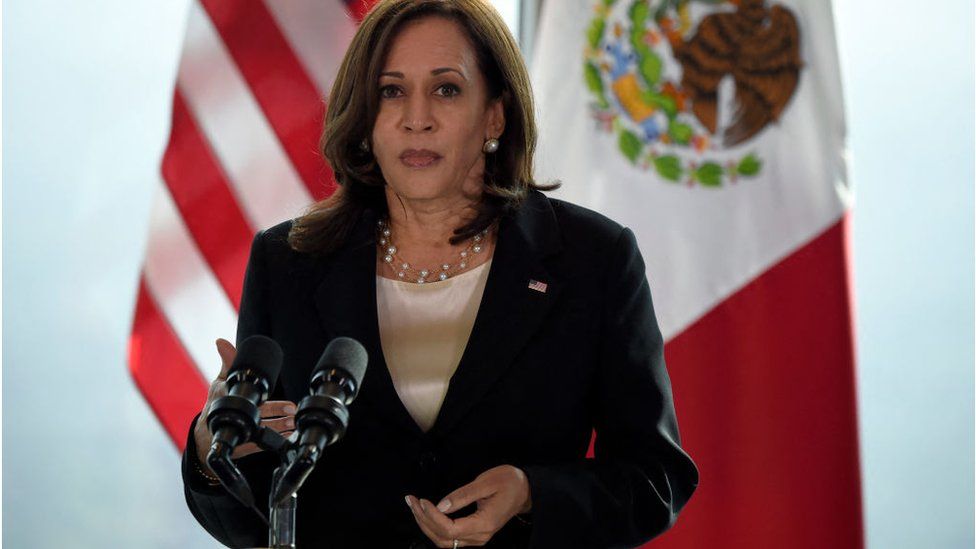
On Kamala Harris’ visit to Mexico border: Keep people at the center
In early June, Vice President Kamala Harris marked her first international trip by visiting Guatemala and Mexico. It was central to a mission tasked by the president to look into the “root causes” of migration in the region and to bolster diplomatic ties with El Salvador, Guatemala, Honduras, and Mexico.
At the time, Harris faced scrutiny by the GOP that neither she nor the president had visited the U.S. Mexico Border, arguing the current administration is overlooking the numbers of migrants seeking asylum at the border and overwhelmed migrant facilities.
Harris traveled to Guatemala and Mexico in a traditional diplomatic fashion, extending a show of good faith with a slate of task forces and investments, though Guatemalan President Giammattei is unlikely to side with the U.S. on all its concerns Harris presented.
This is expected, but both sides are at risk of further dissonance by continuing to ignore their role in the issue of mass migration from the Northern Triangle and through Mexico — From corruption to interference.
The people of Guatemala and Mexico were out of focus during the diplomatic visits earlier this month, and it is possible this will happen again.
The people of Guatemala are out of focus during Kamala Harris’ trip to fix root causes of migration. By @ErickaConant
— aldianews (@ALDIANews) June 8, 2021
"Leaders ignore that the U.S. has played a central role in perpetuating some of these drivers of migration from the Northern Triangle."https://t.co/MErgDq7BrI
During a press conference in Guatemala, a reporter asked Harris to respond to the GOP’s ongoing critique that she nor Biden have visited the Southern Border since they both assumed office.
She replied that she felt her meeting with the two presidents was more substantial as opposed to a “grand gesture,” but in retrospect, the visit to Guatemala and Mexico, without addressing the U.S.'s complicity and focusing on the people, was perhaps just that.
She said addressing the root causes is one of the administration’s highest priorities, but it’s difficult to pinpoint what exactly those causes — in the administration’s eyes— actually are.
While Harris has noted that as California Senator she visited the border, she has also said that unless root causes are addressed, the situation will never be fixed.
So far these words are for show, putting the immediate causes for leaving one’s home country in the background. It also ignores that the U.S. has been central to perpetuating some of these drivers of migration from the Northern Triangle.
In Harris’ visit to the Mexican border, there is the risk that the people will be overlooked again.
It was announced Harris was heading to the U.S. Mexico border on June 25, amid ongoing criticism from Republicans for her “stalling” to visit.
Harris will visit El Paso, Texas, and will be accompanied by Department of Homeland Security Secretary Alejandro Mayorkas.
The visit comes just days after former President Donald Trump is set to visit the border with a group of House Republicans with Texas, including Gov. Greg Abbott. There, Trump will likely use the backdrop of the border to reignite GOP attacks painting the Democratic as lax on immigration matters.
This sort of negative media portrayal is something border communities have grown accustomed to.
CONTENIDO RELACIONADO
CBP recorded more than 180,000 encounters on the Mexican border in May, the most since March 2000. Those numbers, however, were boosted by a pandemic-related ban on seeking asylum: Title 42. It encouraged repeated attempts to cross the border because getting caught carried no legal consequences, the Associated Press reported.
The constant expulsions have taken their toll on border communities, and it is often discussed how Title 42 expulsions affect them, from transforming towns into militarized zones, and the constant presence of CBP.
Harris has criticized Title 42 in the past when Trump was still in office. Yet, the Biden administration has not taken substantial moves to end the policy. While officials Wednesday said it was “designed to be temporary,” there has been no indication of a timeline set by the administration.
Axios reports that the White House is considering ending it as early as July 31.
While it continues to stand, Title 42 endangers asylum seekers forced to wait in uncertain conditions in Mexican border towns. It also puts the towns’ stability at risk.
Title 42 will continue to endanger asylum seekers and destabilize Mexican border towns until change is implemented #WelcomeWithDignity @GRM_Global https://t.co/jMLUwuURYq
— Ericka Conant (@ErickaConant) June 23, 2021
It has resulted in the expulsion of tens of thousands of migrant family members, including asylum seekers and then the thousands of minors separating from their families to cross into the U.S. alone. Over the past four months, migrant adults have been expelled more than 350,000 times under the order.
While his administration has yet to announce anything in regards to Title 42, Biden has recently taken small steps in regards to the now-defunct Remain in Mexico policy (MPP).
Beginning June 23, his administration announced that migrants who had lost their asylum cases under the previous administration’s MPP, or Remain in Mexico program will have a chance to apply to enter the U.S. and reopen their cases.The change reopens the asylum process to thousands of individuals who will, for the first time, have a fair chance to make their claims.
But there has been no word on Title 42, which advocates say also needs to be revoked. While winding down MPP is one way to reduce harm in these Mexican border communities, advocates say the continuation of Title 42 keeps people in desperate need of humanitarian relief at risk.
“The impacts of Title 42 amount to the same harm and lack of access to justice as MPP, and both have acutely impacted Black people seeking asylum from Haiti, Brazil, and elsewhere,” FWD wrote in a statement in response to the Biden administration’s decision.
The effects are visible, but will the vice president see them?










DEJE UN COMENTARIO:
¡Únete a la discusión! Deja un comentario.